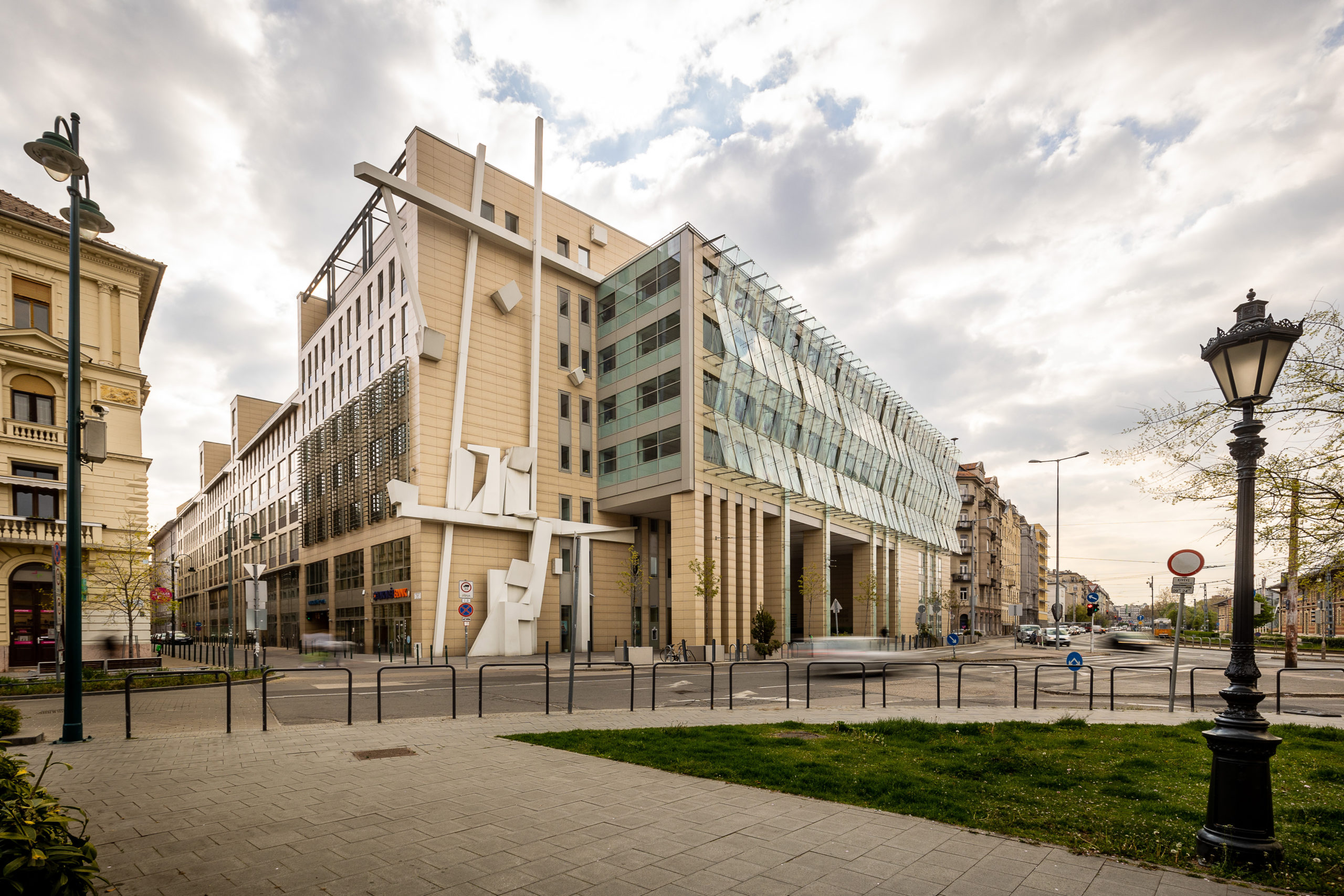Research, projects
Research Centres
Mathematics – functional analysis research group
Head of the research group:
The group studies mathematical analysis and its applications. In particular, it is currently studying stochastic dynamical systems which lead to nonlinear extensions of major results of classical probability theory. This also gives tools to efficiently solve optimization problems on metric spaces, thus can be used to solve various applied mathematical problems. Other than these topics the group studies functional analysis and operator theoretical questions.
Research Projects
COLINE – Complex Links of Neighbourhoods (Driving Urban Transition (HORIZON-CL5-2021-D2-01-16) grant)
The project starts in 2025 and aims to reshape urban living by integrating architecture, mobility, and economics for sustainable cities. Utilising mobile data and AI, it seeks to enhance neighbourhood amenities, reduce segregation, and support climate goals. The goal of the Driving Urban Transitiongrant is to support European cities in the development of dense urban areas by combining residential units with walking-distance amenities by advancing a comprehensive and data-driven view of cities combining architectural, mobility, and economic considerations. In the project, starting in 2025, we will map the amenity composition of neighborhoods by tracing visits using location-based mobile phone data and combine these traces with urban perception data collected by crowdsourcing and machine learning (AI) methods. This comprehensive view will allow diagnosing the completeness of amenities around home and work, the multimodal accessibility and experienced segregation of neighborhoods, and their appeal and resilience at a fine spatial resolution. The project is a collaboration of universities and research institutes: CEU, Vienna, Toulouse School of Economics, Danmarks Tekniske Universite, Instituto Per L’Intercambio Scientifico, Italy, and Corvinus University of Budapest; city authorities (Budapest, Copenhagen, Toulouse, and Vienna municipalities), and telecommunication companies (Telekom Hungary), led by Centre for Economic and Regional Studies, Budapest, principal investigator: Balázs Lengyel.
Building Blocks of the Digital Economy (OTKA)
The research project „Building Blocks of the Digital Economy”, (starts in 2024, Funding organisation: Ministry of Culture and Innovation, Hungary, Source: NRDI Fund) studies the creation, combination, and spread of technological building blocks of the digital economy using large-scale datasets on software library and language use. The research project Building Blocks of the digital economy studies the creation, combination, and spread of technological building blocks of the digital economy using large-scale datasets on software library and language use. To better understand the mechanisms behind this important geographic inequality in innovation, the project has three research aims. We first need to know how elemental software building blocks are created and combined. We also need to quantify how digital economy skills spread between people and places so we can understand barriers to learning and adoption of new software technologies. Finally, we need to know which geographic places are positioned as leaders and laggards in this context to quantify the causes and consequences of inequalities and specialization and to inform policy. To address these aims, the project analyzes data collected on the activities of millions of software developers worldwide to model the dynamics of software building blocks. The project is supported by the National Research and Innovation Office of Hungary, principal investigator: Johannes Wachs.
Measuring the readiness of construction organizations for technology adaptation with using artificial intelligence (OTKA)
The research project „Measuring the readiness of construction organizations for technology adaptation with using artificial intelligence” (starts in 2024, Funding organisation: Ministry of Culture and Innovation, Hungary, Source: NRDI Fund) deals with technology readiness and digital transformation in the construction industry.
Although, the creation of the Construction 4.0 ecosystem refers to a cyber-physical ecosystem that incorporates various technologies, methodologies and processes aimed to create a human-centred sustainable construction industry. Research proved the industry’s adoption of technology-led business transformation has been comparatively sluggish due to management mindset, lack of IT knowledge, and limited process innovation that is necessary for the growing number of collaborating systems. Construction 4.0 brings a complex transformation that needs a guidance. Many digital maturity or readiness models were created to assess the digitalization level of companies and enhance their smooth uptake of Industry 4.0 technologies. These models and their evaluating criteria systems (pillars, layers, levels etc,) differ based on the perspectives applied by the creators such as technological point of view, or the availability of function specific data , or data-driven approach among others. Meanwhile interconnections between technologies and company attributes (processes, human or financial assets and so on) were discovered by these studies, they have been formalized scarcely. Ontology development methods help to do this formalization in an explicit, machine-readable way. This research focuses on how to measure the readiness of construction companies for technology adaptation with using an ontology which incorporates the interconnections and unique attributes of the viewpoints and to provide advice based on the output of measurement with using generative artificial intelligence method. The project is supported by the National Research and Innovation Office of Hungary, principal investigator: Borbásné Szabó Ildikó
Impact of COVID-19 pandemic on SMEs digital transformation journey
In recent years, enterprises and societies around the world are being heavily affected by the global virus pandemic (COVID-19). The crisis has already transformed into an economic and labour market crisis, affecting all enterprises. However, enterprises are coping and trying to respond to these challenges in different ways. Some have been heavily affected due to the closures and reduced working hours recommended to curb the spread of the virus. While others have heavily relayed on digital technologies, which enabled work from home and establishing new online sales and collaboration channels.
The emergence of new digital technologies has brought the era of so-called digital transformation (DT). DT refers to a process of reshaping traditional business practices through the adoption and use of digital technologies (Rogers 2016). Enterprises are in different stages of DT (Probst et al. 2018). Still, many of them, mostly small and medium-sized enterprises (SMEs), are facing challenges of establishing digital capabilities and taking advantage of the opportunities of the latest technologies (Bouwman et al. 2018). Unlike large enterprises, SMEs have a lower level of available resources, digital skills, limited personnel, and budget and thus lagging behind in the digital transformation race (Pucihar et al. 2019). As SMEs are the backbone of the European economy (Bouwman et al. 2018), providing a potential source for jobs and economic growth they need to be more innovative and try to integrate digital technology in all their operational areas, including planning, finance, production, marketing, and human resource management (Kane et al. 2018). This will enable them to increase productivity, remain competitive in the market, and maintain profitable even in a global crisis like a COVID-19.
Even though the advancements in digital technologies provide unprecedented opportunities for SMEs little is known how they adopt and leverage digital technologies to cope with the consequences of COVID-19 (Winarsih, Indriastuti, and Fuad 2020). Moreover, although European Commission tries to shape Europe’s digital future with European digital strategy where the common goals are provided there are diversities among the European Union (EU) countries, including policy, design, funding approach, financial, size, and implementation strategies. These differences also result in the different levels of digital competitiveness of EU countries (Probst et al. 2018). Thus, the comparison between two or more EU countries could provide more detailed insight on how SMEs in the different EU countries deal with the consequences of COVID-19 using digital technologies.
To better understand the impact of COVID-19 on SMEs, in TET project we aim to investigate how different SMEs in EU countries (Slovenia and Hungary) responded to the crises with the use of digital technologies. To achieve this goal we will use a mixed-method research approach – qualitative (multiple case study) and further on a quantitative study (survey) (Venkatesh, Brown, and Bala 2013). We explore how SMEs were facing challenges of the COVID-19 situation and using digital technologies to overcome these challenges, what were the changes which reflected in their operations (business models), for instance, establishing remote work, webshop, electronic data interchange, web portals. Additionally, we investigate how these changes will be incorporated into their future strategies, for example increasing investment in digital technology, providing enhanced training to improve digital skills of employees, establishing new online channels for collaboration with suppliers, buyers, customers, designing new products and services.
The research is performed in several phases: (1) developing of common case study protocol; (2) collecting and analysing data within a multiple case study; (3) developing questionnaire based on qualitative data analysis, conducting survey, and analysing data; (4) demonstrating practical implications – separately for each country and together; (5) providing theoretical implications, which may also serve for future research.
The research results will provide deeper understandings of how SMEs, being in different stages of DT, in Slovenia and Hungary used digital technology to respond to the challenges that emerged with the pandemic situation. Moreover, we will compare results in both countries and assess similarities and differences between SMEs and provide recommendations for enterprises to progress their DT journey.
References:
Bouwman, Harry, Shahrokh Nikou, Francisco J Molina-Castillo, and Mark De Reuver. 2018. “The Impact of Digitalization on Business Models.” Digital Policy, Regulation and Governance.
Kane, Gerald C, Doug Palmer, Anh Nguyen Phillips, David Kiron, and Natasha Buckley. 2018. “Coming of Age Digitally: Learning, Leadership, and Legacy.” MIT Sloan Management Review and Deloitte Insights, 5.
Probst, Laurent, Virginie Lefebvre, Christian Martinez-Diaz, Nuray Unlu Bohn, PwC, Demetrius Klitou, Johannes Conrads, and CARSA. 2018. “Digital Transformation Scoreboard 2018: EU Businesses Go Digital: Opportunities, Outcomes and Uptake.” Luxembourg.
Pucihar, Andreja, Gregor Lenart, Mirjana Kljajić Borštnar, Doroteja Vidmar, and Marjeta Marolt. 2019. “Drivers and Outcomes of Business Model Innovation—Micro, Small and Medium-Sized Enterprises Perspective.” Sustainability 11 (2): 344.
Rogers, David L. 2016. The Digital Transformation Playbook. Columbia University Press.
Venkatesh, Viswanath, Susan A Brown, and Hillol Bala. 2013. “Bridging the Qualitative-Quantitative Divide: Guidelines for Conducting Mixed Methods Research in Information Systems.” MIS Quarterly 37 (1): 21–54.
Winarsih, Maya Indriastuti, and Khoirul Fuad. 2020. “Impact of Covid-19 on Digital Transformation and Sustainability in Small and Medium Enterprises (Smes): A Conceptual Framework.” In Conference on Complex, Intelligent, and Software Intensive Systems, 1194 AISC:471–76. Springer.
Slovenian – Hungarian scientific and technological cooperation Project No. 2019-2.1.11-TÉT-2020-00172 – project brief

